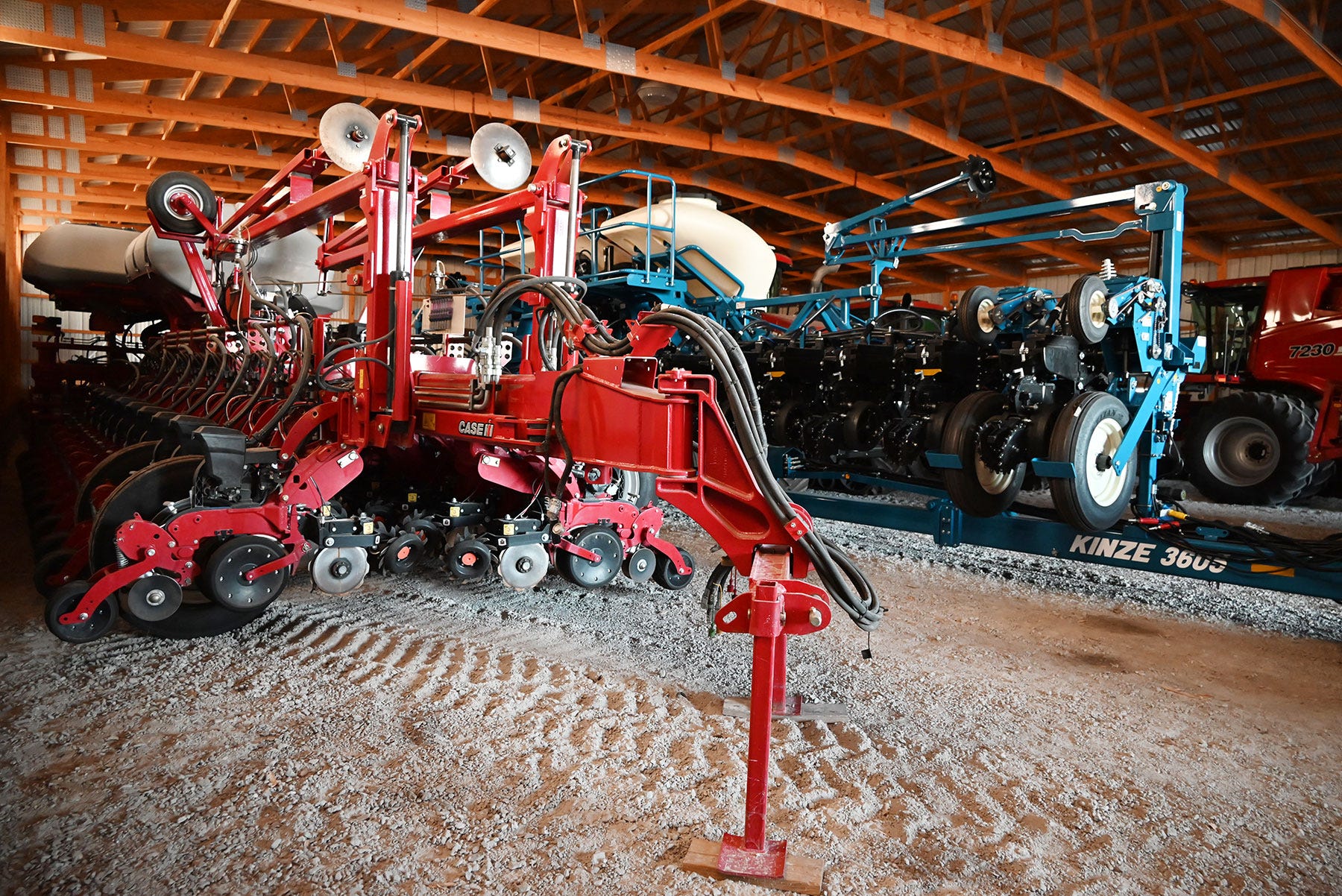March 15, 2024

Ranking up there with the red or green debate is the argument over whether to plant corn or soybeans first. There are advantages to both sides, but is it a trick question? Should both be planted first?
It can take years to determine which routine works best in your operation. Several producers share their thoughts about what decision they’ve landed on and the results.
Beans take the lead
Brian Scott, Delphi, Ind., has planted beans first for the past few years after seeing university research roll out about the benefits of starting beans early. He was eager to test it out, especially after spending years believing that beans wouldn’t fare well with an early plant date.
“We always used to think beans were just a lot more fragile than corn,” Scott says. “And now, it seems like that’s just completely flipped, where beans can get put through a lot more than we think.”
Scott explains that he planted a field with beans on April 6 two years ago, and it saw snow and frost. However, a cover crop sat higher than the beans and seemed to shield them from damage. That field ended up as Scott’s second-best bean field that year.
Waiting to plant corn also has solved problems Scott used to encounter when trying to plant corn early. He notes that waiting allows for warmer soils, more mineral availability and less time to emergence. It has also saved him money.
“A lot of things we’re trying to purchase, as far as fertility or seed treatment, we don’t need if it’s a little bit warmer, saving us that money,” Scott adds.
The only downside Scott sees is that a warm April and May are needed to help boost that soybean canopy fill to squash any weed competition. He plants his beans in 30-inch rows. However, when the weather cooperates, he has noticed that flowering takes place early.
Corn and beans tied for first
While Scott has determined that planting beans first works best in his operation, Brian Cords, Medaryville, Ind., found his groove in starting corn and beans at the same time. He also says he reaps benefits from planting early.
“I’ve been noticing that the earlier we plant, our yields have been going up,” Brian says. “We try to beat the summer solstice to get the beans to flower early and hope they put more nodes on, which will increase your yields.”
Brian shoots to have planters rolling by April 15. This takes some coordination with the rest of his crew to keep the planters moving in the same direction. His daughter Jenna explains that they move as a front.
“We move in a full force,” she says. “We’ll start in Medaryville and end in Pulaski. We just kind of move together, which helps since the farms are spread apart.”
This would not be possible without the labor component, Brian says, adding they are blessed with a crew large enough to cover all the moving parts of planting season.

OUT OF THE SHED: The color of your equipment may also be debated when rolling out of the shed for planting season. It’s time to set that argument aside and decide what seed will hit the ground first. Pictured are a Case IH corn planter and a Kinze soybean planter.
For those who don’t have that additional labor, Kent Haring, Medaryville, says he’s seen a larger yield increase when planting beans early.
“I don’t see the advantage of planting corn early as much as planting beans early,” he says.
While Haring also starts both crops at the same time, he’s noticed that corn needs a better stand to get a solid start, while beans can compensate for a less-than-optimal stand.
Early planting considerations
Brian has been planting both corn and beans early for the past five years. He explains that he’s always planted corn early but has recently seen the advantages to planting beans early as well. Like Scott, Brian was influenced by university research examining getting beans in the ground early.
“After reading articles and seeing people doing research through university trials, it showed that planting beans early paid off,” he says. “We have two planters. We plant our beans in 15-inch rows and our corn in 30-inch rows, so we had that opportunity to run both at the same time. We capitalized on that.”
Brian emphasizes the importance of having dry soil to plant early. Jenna agrees, explaining that it all boils down to the type of ground being worked.
“You want to make sure you put the right varieties on the right ground,” she says.
For Jenna and her father, that means starting on their sandier soils and pushing the heavy, black soils to later in the planting season. Each year, they plan to start and end on the same fields as previous years because they’ve learned which ones will be ready for planting earlier in the season.
Brian recommends keeping an eye on the crop insurance planting date, which is April 10 for corn and April 15 for beans in Pulaski County, Ind. Those dates have moved up in the past few years, he says. He says knowing those dates and keeping them top of mind can help if the growing season doesn’t go as planned.
Ultimately, when it comes to choosing to plant corn or beans first and whether to plant early, it depends on soil type, labor and individual experiences.
“You just have to try it on your own ground,” Jenna adds.
Read more about:
Early PlantingAbout the Author(s)
You May Also Like






